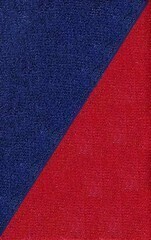
S89388
CARPENTER, John
| Service Numbers: | 1946, 1946A |
|---|---|
| Enlisted: | 29 November 1915 |
| Last Rank: | Driver |
| Last Unit: | 14th Field Artillery Brigade |
| Born: | Burra, South Australia , 21 August 1894 |
| Home Town: | Burra (SA), Goyder, South Australia |
| Schooling: | Burra, South Australia |
| Occupation: | Baker |
| Died: | Medindie, South Australia , 15 June 1983, aged 88 years, cause of death not yet discovered |
| Cemetery: |
Enfield Memorial Park, South Australia Rose Gardens Memorial Sites. CEZ 11 |
| Memorials: | Burra District WW1 Honor Roll |
World War 1 Service
| 29 Nov 1915: | Enlisted AIF WW1, Private, 1946, 9th Light Horse Regiment | |
|---|---|---|
| 10 Feb 1916: | Involvement Private, 1946, 9th Light Horse Regiment, --- :embarkation_roll: roll_number: '2' embarkation_place: Adelaide embarkation_ship: HMAT Warilda embarkation_ship_number: A69 public_note: '' | |
| 10 Feb 1916: | Embarked Private, 1946, 9th Light Horse Regiment, HMAT Warilda, Adelaide | |
| 11 Nov 1918: | Involvement Driver, 1946, 14th Field Artillery Brigade | |
| 4 Jan 1919: | Involvement AIF WW1, Driver, 1946A, 14th Field Artillery Brigade | |
| Date unknown: | Wounded 1946A |
Help us honour John Carpenter's service by contributing information, stories, and images so that they can be preserved for future generations.
Add my storyBiography contributed by St Ignatius' College
John Carpenter was born on 21 August 1894 in Burra, South Australia. He hailed from a small farming and mining town and his parents were William and Augusta Carpenter. Before joining the war, he worked as a labourer, a job that demanded hard work and strength.
John Carpenter joined the Australian Imperial Force (AIF) on 29 November 1915. After some training in Adelaide he embarked from Adelaide on 10 February 1916 on HMAT Warilda (A69) to WW1. He was initially assigned to the 2nd Battalion of the 9th Light Horse Regiment.
In March 1916, John was moved from the Light Horse Regiment to the 14th Field Artillery Brigade. This was a change from working with horses to working with artillery. As a Driver in the artillery unit, John had to move heavy guns, bullets, and supplies over rough ground. Artillery units were essential for helping infantry attacks, attacking enemy trenches, and keeping defensive positions.
In June 1916, John was sent to France, disembarking at Marseilles on the 27th. Heree he experienced the bitter trench war on the Western Front. Life in the trenches was difficult, soldiers had to put up with constant bombardment, muddy grounds, and the constant risk of gas attacks.
John became ill with influenza at the beginning of November 1916 and was hospitalised for a couple of weeks before rejoining his unit, the 14th Field Artillery. It was not long before he was diagnosed with myalgia, a painful muscle condition probably from the stress of carrying heavy artillery in cold conditions, on 4 January 1917. While receiving treatment he was further diagnoised with Dermatitis and was sent to Fargo Military Hospital in England to recover. He was transferred between hospitals and received a diagnosis of Trench Fever in May 1917. After he recovered in August he was taken on strength with the 3rd Divisional Ammunition Column and in November was transferred to the 8th Field Artillery before returning to the 14th Field Artillery in January 1918
On 24th April 1918, he received a gunshot wound to the right thighand left buttock and after treatment in France was invalided to the 3rd Auxillary Hospital in England. His condition was serious with a medical report in his records describing small pieces of bone coming away and burst abscesses. He had a high temperature and rapid pulse. John continued to receive treatment until he was repatriated back to Australia.
After the Armistice on 11th November 1918, which ended World War I, John Carpenter arrived back in Australia on 18 February 1919 and was formally discharged on 20 April 1919, after three years and 143 days of service, three years and nine days overseas.
John resumed civilian life in South Australia and married Florence Carpenter, and together they had two daughters, Maureen Carpenter and Barbara Carpenter. H
John Carpenter lived a long life and died on 15th June 1983, aged 88 years. He was buried at Enfield Memorial Park in South Australia, in the Rose Gardens Memorial Sites (CEZ 11).
Bibliography
Awm.gov.au. (2025). Private John Carpenter. [online] Available at: https://www.awm.gov.au/collection/P10640915 [Accessed 19 Mar. 2025].
Findagrave.com. (2015). John Carpenter (1894-1983) - Find a Grave... [online] Available at: https://www.findagrave.com/memorial/150083364/john-carpenter [Accessed 19 Mar. 2025].
Terrace, V. (2025). View digital copy. [online] Naa.gov.au. Available at: https://recordsearch.naa.gov.au/SearchNRetrieve/Interface/ViewImage.aspx?B=3207371&S=1 [Accessed 19 Mar. 2025].
Trove. (2025). Our Boys at the Front. - Burra Record (SA : 1878 - 1954) - 30 Oct 1918. [online] Available at: https://trove.nla.gov.au/newspaper/article/39140161 [Accessed 19 Mar. 2025].
Vwma.org.au. (2025). Australian Soldiers, Memorials and Military History. [online] Available at: https://vwma.org.au/explore/projects/173966/edit [Accessed 19 Mar. 2025].












